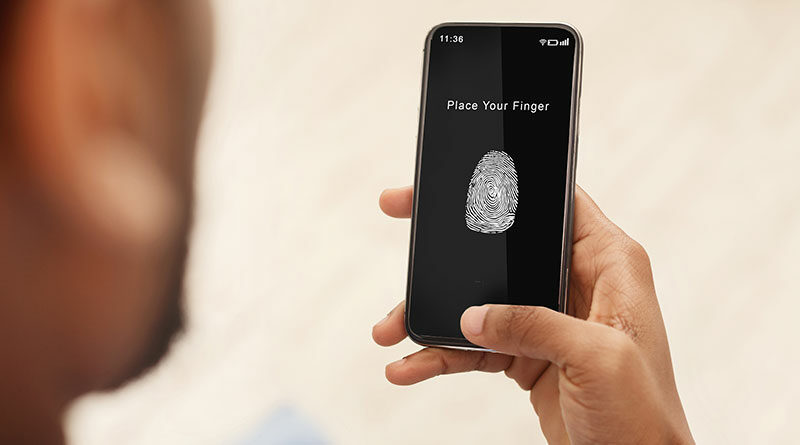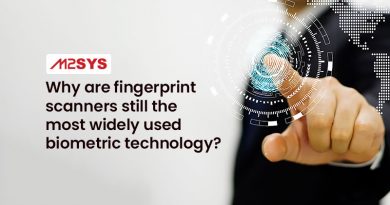Should Biometric Technology Be Monitored?
The following guest post was submitted by Katrina Manning of Build Niche Links.
Should biometric technology be monitored? To answer this, one must analyze the biometric system. To start with, what is biometrics? Biometrics is the analysis and measurement of people’s unique physical and behavioral characteristics. It’s mainly used for identification, verification and access control. Verification is a “one-to-one” matching between the person’s biometric and biometric templates in a database. Identification is a “one-to-many” matching. A person’s biometric is compared with all of the biometric templates in a database.
Types of biometrics
• Hand Geometry
Hand geometry relies on measurements of the height, length, and width of the fingers, shape of knuckles and distances between joints. Uses LEDs mirrors, optical cameras and reflectors to take two-dimension orthogonal images of the hand. Calculations are done based on the images and a template created.
• Facial recognition
Facial recognition technology uses one of the two methods: Eigenface comparison or facial geometry. Facial geometry works by taking a known reference point and measuring the various features of the face in their distance and angles from this reference point. Eigenface comparison uses a palette of facial abstractions and compares the captured face with these templates.
• Eye biometrics: Iris/Retina
Both the iris and the veins of the retina provide patterns that can uniquely identify an individual. Retina scanning requires the subject to look into a reticle and focus on a visible target while the scan is completed. Using infra-red light for illumination, the iris scanner reveals details on the eyes which are harder to see normally.
Others include voice recognition, fingerprint recognition, and Biometric Match-on-Card technology.
Major concerns
Despite many pros that are accrued from biometric there are always a cons. Like any other new arising technology, the biometric tech is potentially susceptible to abuse. Thus, there are high chances that biometric technology can or will violate privacy and other liberty if misused. Major concerns about biometric include; information will be gathered without knowledge and permission, clearly undefined reasons, or used for purposes other than the one for which it was initially intended for.
The information could also be disseminated without explicit permission. This information can be used for or social control purposes. There are also concerns about tracking. Tracking is a real-time or near-real-time surveillance of an entity be it an individual. This enhances profiling, it’s the reconstruction of an individual’s past activities. This clearly means nobody will be anonymous anymore, which is a good and a bad thing. Identity fraud could also be possible.
• Biometric technology and databases
For any system, there must a database. For effectiveness, a biometric system performs a comparison of captured biometric data to the one in a biometric database. And for any database, there are abuses which both have static and dynamic dimensions. The static issues are about safeguarding valuable collections of personally identifying information. Since they are part of an important security system, this makes them a perfect target for attack, compromise, malicious or fraudulent use and theft.
• Surveillance
Biometrics could revolutionize the current surveillance systems into something new—something categorically more powerful and much more invasive. With the terrorist threat on the rise, biometric technology can be used to enhance security and ensure appropriate safeguards are in place.
This makes it easier for measures to be taken against individuals by agents of the government, by corporations, and by our peers. This is worth pursuing. But then again, this biometric information could enable profiling of everybody. This could be to manipulate consumer behavior to the advantage of an organization.
It’s also useful at the workplace. With flexible workplaces on the rise, it is essential to know that your employees are safe from identity thieves, imposters and cyber criminals. Moreover, biometric technology, such as fingerprint scanning, can prevent your intellectual property from being accessed by unauthorized individuals.
• Security
Most verification and identification measures put today involve biometric technology. These technologies have proved substantial potential to improve national security by providing a means to identify and verify people in many contexts. Such as utility in controlling access to areas where security risks are high i.e. airports, critical infrastructure facilities, etc…
• Tracking
By far the most significant positive and negative aspect of biometric systems is the potential to physically locate and track people accurately. Many surveillance systems seek to track and locate, on the other hand, biometric systems are extremely accurate.
This is positive for a people with a good course. On the other hand, it’s devastating for people with ill intentions such as terrorists. Imagine what they could do. Depending on how a biometric system is designed, this determines whether it actually poses a risk.
Biometric critics believe that liberty derives from anonymity and in this case, tracking is destroying it, while supporters are of the view that proper security is dependent on complete identification and that liberty would in no way be put at risk. This totally depends on how you view the system put in place.
• Privacy
Privacy should be protected at all costs unless proven otherwise. Biometric systems seem to somehow diminish privacy. To illustrate, they can be used electronically search biometric data about an individual. Reasonable people can disagree about when biometric technology should be utilized. The policy challenge is in finding the most effective uses of the specific biometric technology — both for liberty and security — hence labeling it as universally good or evil.
New emerging technologies will also make it possible to extract far more information than what the current biometrics are collecting. While law-enforcement databases contain only snippets of the genome, some agencies may decide to keep the physical DNA samples for and endless duration, this raises a concern of what future genetic-analysis tools will be able to discern. A person’s DNA truly contains every information about that person. This enhances profiling.
Varying biometric technologies should be designed in a way that they meet both their tasks and privacy requirements. Proper use of biometric technologies could help curb a lot of security related problems currently experienced.
Verdict: should biometric technology be monitored? Well, this depends on what, when or how it will be done. As long as monitoring is done for proper intentions and does not violate the CIA triad, this form of technology should be monitored.
This is Katrina’s third contributing article for M2SYS Blog. Check her very first entry “Why Ears Are the Future of Biometrics”. You can follow Katrina on twitter @Kcinnaroll.











